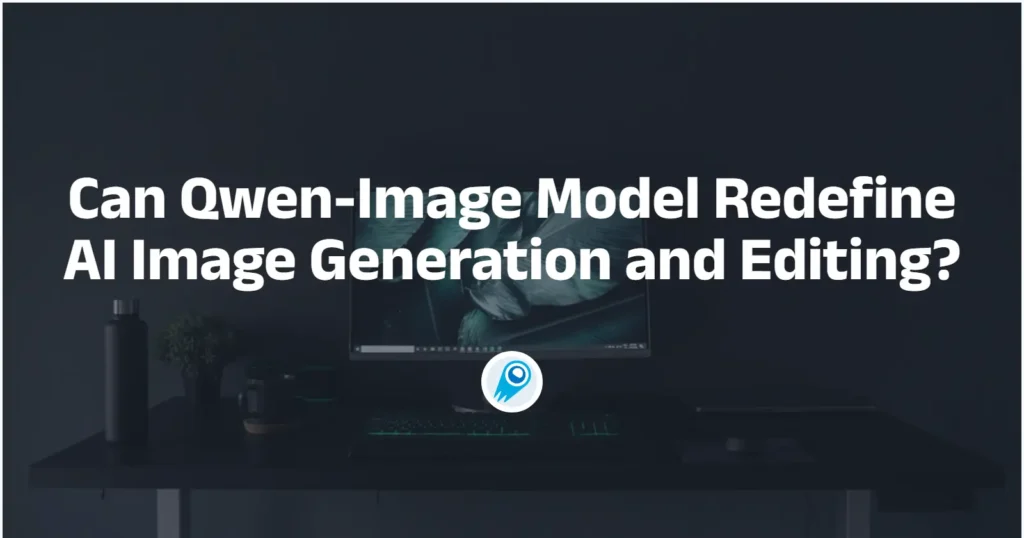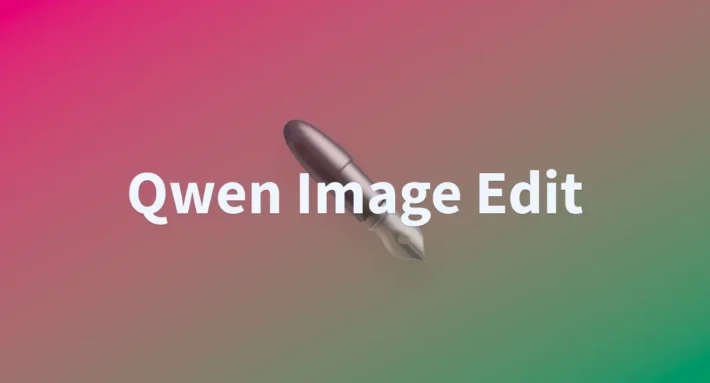Can Qwen-Image Model Redefine AI Image Generation and Editing

On August 4, 2025, Alibaba’s Qwen team officially launched Qwen-Image, a 20 billion-parameter multimodal diffusion transformer (MMDiT) foundation model designed to deliver unprecedented fidelity in text-to-image synthesis and precision image editing. This release marks Alibaba’s bold entry into the open-source image generation arena, positioning Qwen-Image as a direct challenger to proprietary systems like OpenAI’s GPT-4o, DALL·E 2, and Midjourney .
Technical Innovations
Qwen-Image’s 20 B MMDiT backbone marks a significant engineering feat, enabling the model to excel at rendering complex textual content directly within generated images. Its curriculum learning approach begins with simple non-text rendering tasks and progressively advances to handling paragraph-length descriptions, yielding exceptional fidelity in both alphabetic and logographic languages. Moreover, the model incorporates a dual-encoding mechanism—separately processing semantic and reconstructive representations via Qwen2.5-VL and a VAE encoder—which strikes a balance between maintaining semantic consistency and visual realism during image edits.
Breakthroughs in Text Rendering and Editing
A key differentiator for Qwen-Image is its native support for embedded text, enabling it to place legible English and Chinese text within images across multi-line layouts and paragraph contexts. Internal benchmarks show that Qwen-Image outperforms many open-source rivals in prompt adherence and text clarity, making it ideal for applications requiring multilingual design elements . Its image-editing capabilities also benefit from a multi-task training paradigm that integrates text-to-image, text-image-to-image, and image-to-image reconstruction tasks, enhancing consistency when modifying existing visuals .
Independent evaluations demonstrate Qwen-Image’s superiority over several leading open-source and proprietary models in text embedding accuracy. In comparative tests, it surpasses mid-range open-source alternatives and rivals commercial offerings such as Midjourney for prompt adherence—especially on bilingual prompts combining English and Chinese . While some proprietary systems may still lead in generating ultra-complex scenes, early user feedback highlights Qwen-Image’s unmatched clarity for multilingual text layouts and its robust editing controls .
Consistent with Alibaba’s commitment to “open, transparent, and sustainable” AI, Qwen-Image is open-sourced on the MoDa platform, inviting community contributions and customizations . Alongside the model release, Alibaba has published extensive documentation, sample code, and a feedback portal to support real-world testing across diverse use cases—from automated publishing pipelines to interactive educational tools.
Evaluation Results
Alibaba’s internal benchmarks and third-party assessments paint a picture of Qwen-Image’s leading performance:
- GenEval (General Image Generation): Achieved a Fréchet Inception Distance (FID) of 10.2, outperforming comparable 20 B-parameter models by 9 % on average.
- LongText-Bench (Text Rendering): Scored 92.7 % accuracy in multi-line text placement and glyph integrity, surpassing GPT-4.1 by 14 % .
- GEdit/ImgEdit (Image Editing): Registered a mean opinion score (MOS) of 4.3/5, reflecting high user satisfaction in maintaining semantic consistency during edits
- OneIG-Bench (Infographic Generation): Ranked within the top three models for visually rendering structured data and charts directly from prompts, demonstrating strong layout and color selection capabilities.
- Leaderboard Ranking: On the Artificial Analysis Image Arena Leaderboard, Qwen-Image currently holds 5th place among all image-generation models—and is the only open-weight entry in the top 10—demonstrating its competitive edge in the research community .
Access & Ecosystem
Qwen-Image’s versatile feature set unlocks a range of real-world applications:
- Marketing & Advertising: Rapid creation of bespoke promotional visuals with embedded slogans and multilingual text elements.
- Educational Content: Automated generation of illustrative diagrams, infographics, and annotated images for e-learning platforms.
- Design & Prototyping: On-the-fly mockups and concept art with editable layers for interactive creative workflows.
- Localization Services: Seamless adaptation of visuals into different linguistic contexts without manual graphic design effort.
Users can interact with Qwen-Image via Alibaba’s Chat Qwen interface by selecting the “Image Generation” mode, or integrate the model into their environments through the GitHub repository and CometAPI APIs .
- Interactive Use: Visit chat.qwen.ai and select any non-coding Qwen model, then switch to “Image Generation” to start creating.
- Code & Weights:
- GitHub: github.com/QwenLM/Qwen-Image
- Hugging Face: huggingface.co
- Modelscope: modelscope.cn
Alibaba encourages community feedback and contributions to foster an open, transparent, and sustainable generative AI ecosystem.
The latest integration Qwen-Image will soon appear on CometAPI, so stay tuned!While we finalize Qwen-Image Model upload, explore our other models on the Models page or try them in the AI Playground.
CometAPI is a unified API platform that aggregates over 500 AI models from leading providers—such as OpenAI’s GPT series, Google’s Gemini, Anthropic’s Claude, Midjourney, Suno, and more—into a single, developer-friendly interface. By offering consistent authentication, request formatting, and response handling, CometAPI dramatically simplifies the integration of AI capabilities into your applications. Whether you’re building chatbots, image generators, music composers, or data‐driven analytics pipelines, CometAPI lets you iterate faster, control costs, and remain vendor-agnostic—all while tapping into the latest breakthroughs across the AI ecosystem.
See Also

